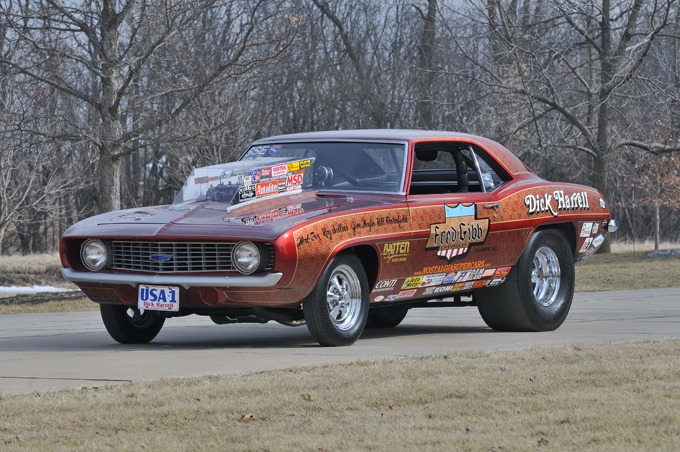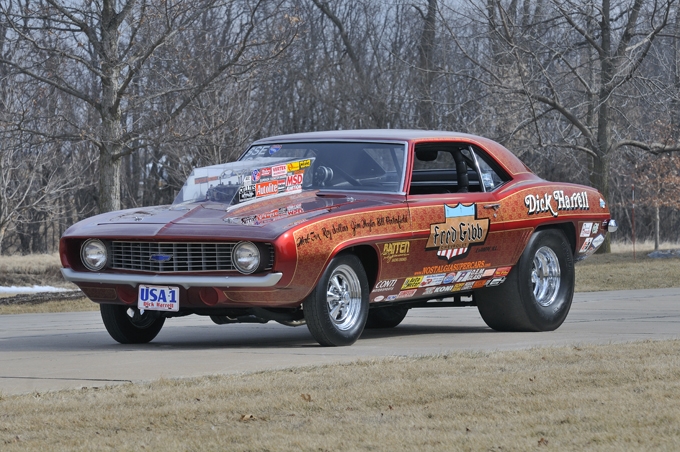
The first of a total of 69 ZL1 Camaros, the Gibb-Harrell car was born of an idea hatched by racer Fred Gibb and Chevrolet Product Promotions Manager Vince Piggins in 1968. Both wanted to run Chevrolet’s new all-aluminum Can-Am 427 engine in NHRA Super Stock drag racing.
Rules required that Chevy build 50 examples for the car to qualify for competition. Gibb committed to taking the entire minimum order of 50 cars. Piggins then activated the COPO ordering process, specifying that COPO 9560 add an all-aluminum 427 engine, cold-air induction, Harrison 4-core radiator, transistorized ignition, multi-leaf rear springs and a heavy-duty 4.10 12-bolt rear end.
The first and second ZL1 Camaros arrived at Fred Gibb Chevrolet covered in snow on New Year’s Eve 1968. The first car was immediately sent to Dick Harrell’s Kansas City, MO, shop, where Harrell readied it for its scheduled debut at the 1969 AHRA Winternationals three weeks later at Phoenix. Piloted by Gibb Chevrolet employee Herb Fox, the car beat the two top qualifiers before losing in the semifinal to eventual winner Arlen Vanke’s Barracuda. The most alarming part of the day for the Mopar contingent came when Fox eliminated Mr. Four-Speed himself, Ronnie Sox, in the Sox & Martin Hemi Barracuda.
Harrell demonstrated the car’s performance for Super Stock magazine in February 1969, turning 10.41 at 128.10 mph with the stock Holley 850, and 10.29 with dual 660 Holleys on a Weiand tunnel-ram. The Gibb-Harrell ZL1 Camaro then barnstormed the country, racking up victories in both AHRA and NHRA competition. In 1971, the car was converted to the new AHRA Pro Stock rules and driven by Jim Hayter, who set the AHRA Pro Stock record of 9.63 at 143 mph and won the AHRA Championship in both Super Stock and Pro Stock.
The car then disappeared into bracket competition for years until it surfaced in an ad in National Dragster in 1983. Oldsmobile engineer and ZL1 fanatic Bill Porterfield saw the ad and began a five-year pursuit of the car through two different owners, finally landing it in 1988. Porterfield then began the laborious task of restoring ZL1 Number One. This included building a correctly equipped Winters foundry ME-coded aluminum 427 rat motor, assembled entirely from authentic 1969 castings.
An astounding rarity, the Fred Gibb-Dick Harrell ZL1 Camaro pays homage to its creators, its history as a World Champion drag racing legend, and its status as Number One in the ZL1 lineage of classic COPO Camaros.
(Introductory description courtesy of Mecum Auctions.)

